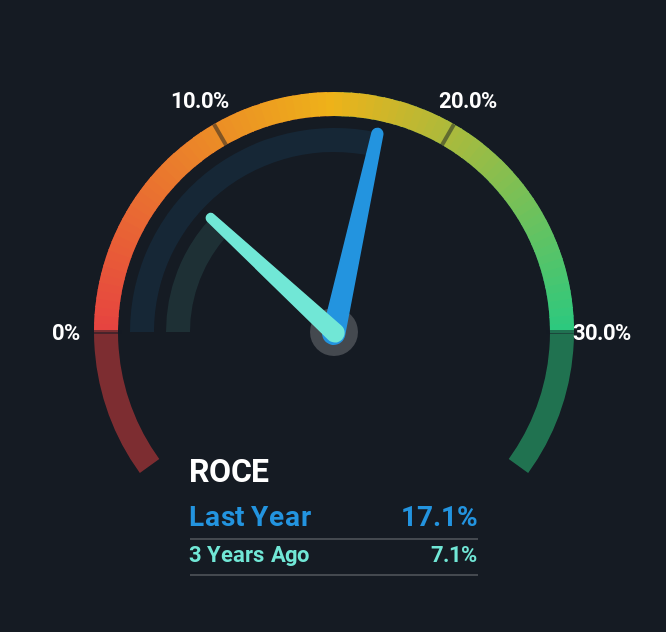- Japan
- /
- Electronic Equipment and Components
- /
- TSE:7760
IMV (TSE:7760) Might Have The Makings Of A Multi-Bagger
Finding a business that has the potential to grow substantially is not easy, but it is possible if we look at a few key financial metrics. One common approach is to try and find a company with returns on capital employed (ROCE) that are increasing, in conjunction with a growing amount of capital employed. This shows us that it's a compounding machine, able to continually reinvest its earnings back into the business and generate higher returns. So on that note, IMV (TSE:7760) looks quite promising in regards to its trends of return on capital.
What Is Return On Capital Employed (ROCE)?
If you haven't worked with ROCE before, it measures the 'return' (pre-tax profit) a company generates from capital employed in its business. Analysts use this formula to calculate it for IMV:
Return on Capital Employed = Earnings Before Interest and Tax (EBIT) ÷ (Total Assets - Current Liabilities)
0.17 = JP¥2.1b ÷ (JP¥22b - JP¥9.4b) (Based on the trailing twelve months to March 2025).
Thus, IMV has an ROCE of 17%. On its own, that's a standard return, however it's much better than the 9.2% generated by the Electronic industry.
View our latest analysis for IMV

Above you can see how the current ROCE for IMV compares to its prior returns on capital, but there's only so much you can tell from the past. If you're interested, you can view the analysts predictions in our free analyst report for IMV .
So How Is IMV's ROCE Trending?
IMV is displaying some positive trends. Over the last five years, returns on capital employed have risen substantially to 17%. The company is effectively making more money per dollar of capital used, and it's worth noting that the amount of capital has increased too, by 28%. The increasing returns on a growing amount of capital is common amongst multi-baggers and that's why we're impressed.
On a separate but related note, it's important to know that IMV has a current liabilities to total assets ratio of 43%, which we'd consider pretty high. This effectively means that suppliers (or short-term creditors) are funding a large portion of the business, so just be aware that this can introduce some elements of risk. While it's not necessarily a bad thing, it can be beneficial if this ratio is lower.
Our Take On IMV's ROCE
To sum it up, IMV has proven it can reinvest in the business and generate higher returns on that capital employed, which is terrific. And a remarkable 628% total return over the last five years tells us that investors are expecting more good things to come in the future. In light of that, we think it's worth looking further into this stock because if IMV can keep these trends up, it could have a bright future ahead.
One more thing to note, we've identified 1 warning sign with IMV and understanding it should be part of your investment process.
While IMV may not currently earn the highest returns, we've compiled a list of companies that currently earn more than 25% return on equity. Check out this free list here.
New: AI Stock Screener & Alerts
Our new AI Stock Screener scans the market every day to uncover opportunities.
• Dividend Powerhouses (3%+ Yield)
• Undervalued Small Caps with Insider Buying
• High growth Tech and AI Companies
Or build your own from over 50 metrics.
Have feedback on this article? Concerned about the content? Get in touch with us directly. Alternatively, email editorial-team (at) simplywallst.com.
This article by Simply Wall St is general in nature. We provide commentary based on historical data and analyst forecasts only using an unbiased methodology and our articles are not intended to be financial advice. It does not constitute a recommendation to buy or sell any stock, and does not take account of your objectives, or your financial situation. We aim to bring you long-term focused analysis driven by fundamental data. Note that our analysis may not factor in the latest price-sensitive company announcements or qualitative material. Simply Wall St has no position in any stocks mentioned.
About TSE:7760
IMV
Manufactures and sells vibration simulation systems and measuring systems in Japan and internationally.
Flawless balance sheet with solid track record and pays a dividend.
Market Insights
Community Narratives



